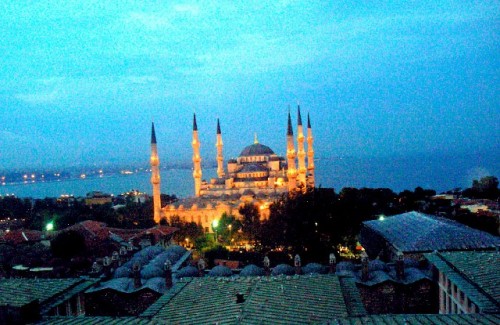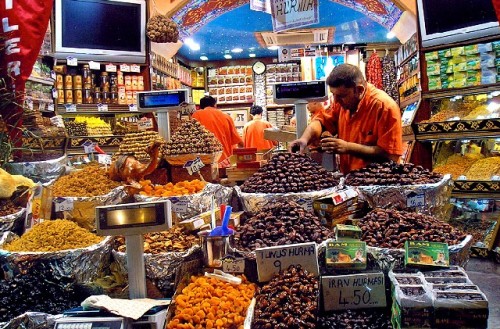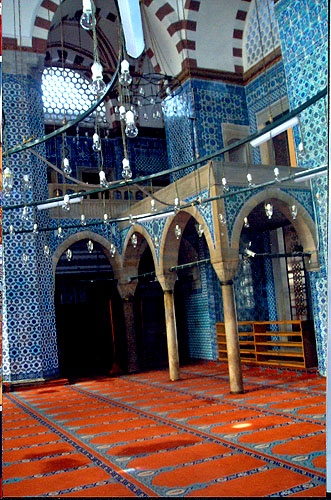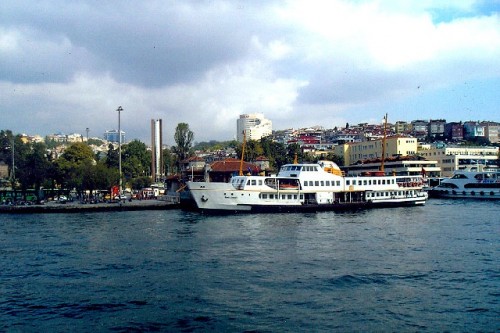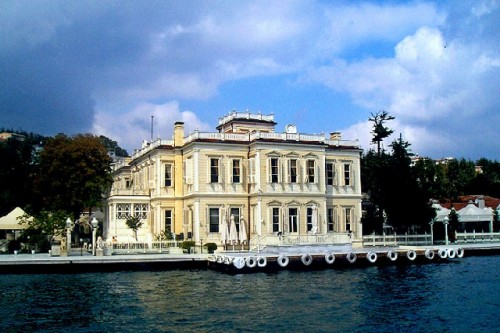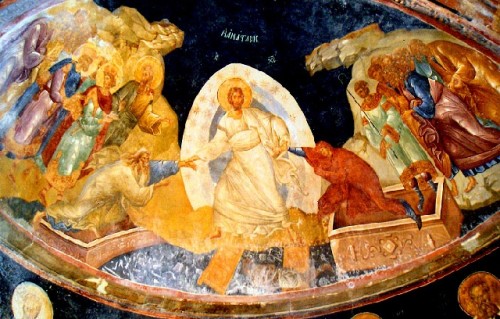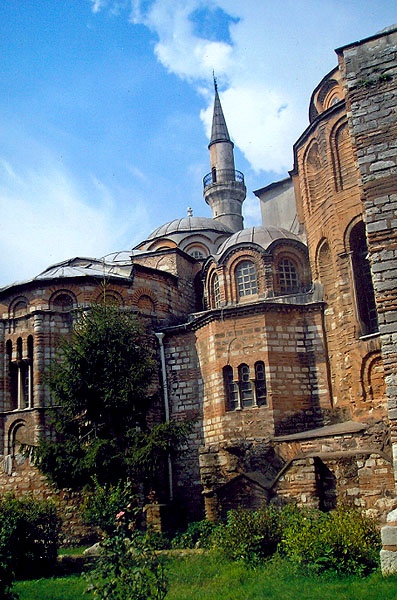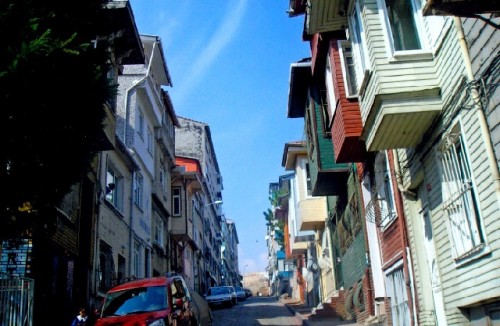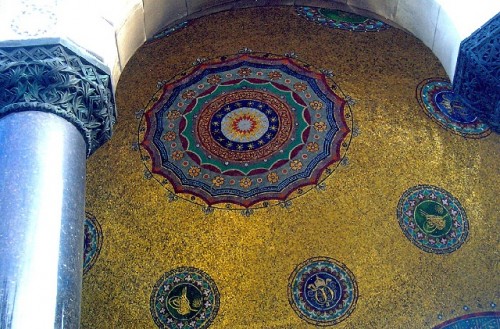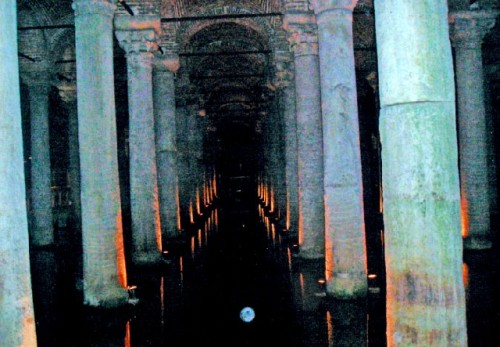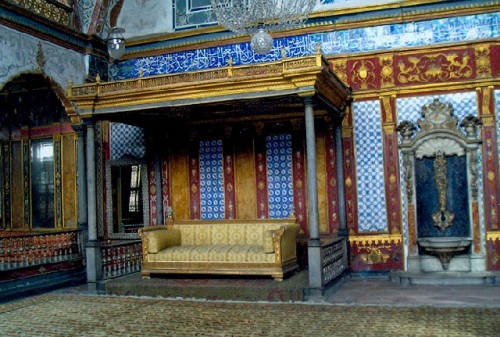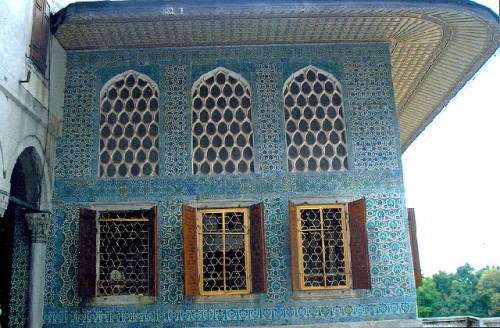Travel in Turkey
Istanbul: Part One
By: Zeren Earls - Mar 02, 2007
Upon my friend Connie's invitation to join a tour of Turkey she was organizing in the States I welcomed the opportunity to visit places I had either not seen or visited since 1964, the year my late husband Paul was a Fulbright research fellow there. Connie, born in Istanbul to missionary parents, designed the itinerary based on her fond memories of traveling through Anatolia as a child. Cintemani Travel, http://www.cintemanitravel.com based in Istanbul, handled our tour arrangements that included all domestic transportation, lodging and food for three weeks, September 24-October 15, 2006. The tour cost $3500 excluding international airfare. Since our tour was custom tailored it included places beyond the popular tourist spots of Istanbul, Cappadocia, Antalya, Pamukkale and Kusadasi. There is plenty of information at the http://www.travelturkey.com/ website if you wish to connect with US based travel agencies or airlines to design a tour of your own.
Istanbul
Already in Istanbul for a week, I joined the group of 15 upon its arrival at the Arcadia hotel in Sultanahmet, the old square that is named after the mosque famous for its blue-tiled interior and six minarets. Quickly settling in my room on the sixth floor with a distant view of the Marmara Sea beyond the minarets of the Blue Mosque, I decided to stroll while the others rested from their lengthy overseas journey.
It was the first day of Ramadan; its festivities and aromas permeated the air. The narrow cobblestone streets were packed with shoppers getting ready for iftar, the dinner that ends the daylong fast. The unique smell of the special Ramadan pitas sprinkled with black cumin seeds wafted out of the bakeries. Women and men in traditional garb, the former in long coats and headscarves, the latter in scull caps, mingled with jean-clad Turkish youth and wide-eyed tourists. The muezzin's call to prayer, amplified to the street, pierced through the din of the square, reminding people of their mid-afternoon obligation. As masses hurried to the Sultanahmet Mosque, I stood aside watching this spectacle of humanity, since this part of Istanbul is very different from the modern area that I am accustomed to, where tradition is a rare sight.
I then walked over to the Çifte Hamam (Double Bath), constructed by the great architect Sinan in 1556 and known for its innovations in Turkish bath architecture. Currently the Ministry of Culture and Tourism, to promote the art of handmade Anatolian carpets, uses this building for exhibitions and sale. One of my favorite places to visit, this unique setting displays the depth and breadth of carpets and kilims with traditional motifs from various regions of Anadolu, the motherland, or Anatolia as known in Greek.
Our welcome dinner was in the Arcadia's roof restaurant with a splendid nighttime view of the old city. The six minarets of the Sultanahmet Mosque lit up at dusk to signal the end of fasting. Lights delineated the balconies of the minarets along with the mosque's domes and half-domes. Pigeons, home for the night, carpeted the rooftops of houses across the way; the modern Istanbul shimmered at a distance. We enjoyed platters of cold and warm meze (appetizers), such as feta cheese, stuffed peppers and grape leaves, tiny meatballs and fried phyllo-dough triangles, followed by the main course. Called hünkâr begendi (the Sultan's favorite), this is a classic Ottoman dish of small cubes of mutton served over pureed eggplant. A seasonal salad accompanied the meal, which ended with crème caramel and Turkish coffee. We were forewarned by Connie to leave our diets at home. We enjoyed courses of delicious food with local variations throughout the trip.
The trip to the Spice Bazaar the next morning was a feast for the senses. We walked through narrow alleys lined with small stalls of multi-colored spice cones, olives, dates, coffee beans and candy. Alternating strings of dried okra, peppers, eggplant, corn and garlic along with goat cheese in its original skin, decorated the storefronts. Stacks of natural sponges, brooms, glass beads, copper and brassware added to the visual feast. The adjacent flower market featured seeds, bulbs, potted plants, birds and rabbits. Here were also tripe and sheep's trotter, foods found at special eateries.
Walking through the Long Market, we reached the Rüstem Pasha Mosque, a small jewel built by Sinan in 1561. This mosque, built for a pasha, has only one minaret, as opposed to those with multiple minarets for sultans. Wearing headscarves and leaving our shoes at the door, we walked in. The wall-to-wall carpet divided by designs into rectangular units indicated the prayer space per person. Renowned Iznik quartz tiles adorned the walls.
An excursion on the Bosporos by private motorboat allowed us to view both European and Asian shores, as Istanbul straddles the two continents. We passed by old palaces, luxury hotels, some old wooden houses in decay and others restored as seaside villas with beautiful gardens. Cruise liners, passenger ferries, cargo freights, leisure craft and fishing boats dotted the seascape, which opens to the Black Sea. The two suspension bridges connecting the continents added to the beauty of the setting. We disembarked at the widest point of the Bosporos in Tarabya and continued by bus to Sariyer for lunch at the Aquarius seafood restaurant.
Lunch was a feast from the sea. Cold meze of stuffed mussels, octopus, pickled sea bass and mackerel preceded warm meze of squid, fried mussels and fish wrapped in phyllo dough, leading up to the day's catch of grilled bluefish, the main course. Turkish meals customarily end with fruit, which in this case was black grapes and melon.
Nearby we visited the Sadberk Hanim Museum, which houses the private collection of the family of Vehbi Koç, one of the giant industrialists of Turkey. The museum consists of two restored 19-century waterfront mansions. One is dedicated to the archeology of ancient Anatolian civilizations from the 6th century BC to the end of the Byzantine Empire, the other to the ethnology of the Ottomans, including textiles, costumes and handicrafts. The fancy room where mother and newborn baby were confined for forty days so as not to catch germs by going out reminded me of my own birth. Although this was my second trip to the museum, I found the visit very worthwhile.
Our long day culminated at the restaurant Sarniç, which is the Turkish name of the Roman Cistern. Near the Haghia Sophia Museum, the 1600-year-old Roman building with massive stone columns and brick ceiling has been restored for fine dining. The menu is a fusion of Turkish and French cuisine featuring crepes and bon filet with Roquefort dressing. The highlight was the ice cream hand-churned in the style of the southeastern city of Maras and flavored with salep, a derivative of dried orchid tubers; it was delicious. As we walked back to the hotel, the Ramadan festivities at the square were at their peak. Popular tunes streamed from loud speakers, vendors strolled around with zithers and tambourines, and people milled arm in arm sampling food from various stalls.
In the morning to beat the crowds we had an early start to Haghia Sophia (Divine Wisdom), the church built AD 337 by emperor Justinian. Its dome, 32 meters in diameter, rises 56 meters above the floor and is surrounded by galleries and semi-domes. The walls are mosaic tesserae glazed with gold and then fired. The church, used by Christians for a thousand years, was converted into a mosque and used as such for another five hundred after the taking of Constantinople in 1453. During the Turkish Republic in 1932, the imagery, which had been whitewashed by Moslems, was cleaned and the building restored as a museum. The Kariye Museum is another former Byzantine Orthodox Church with impressive mosaics. These are in very good condition, as the Ottomans disguised the Christian imagery behind wooden fences instead of whitewashing it.
The Süleymaniye complex is a 16th-century masterpiece by the architect Sinan. In addition to a grand mosque the complex has royal tombs, a medrese (school), library, fountain and soup kitchen, where we enjoyed traditional Ottoman dishes and sweets for lunch. Afterwards we strolled through the alleys of the Grand Bazaar. I spent most of my time in the Sahaflar, the second-hand book dealers' section near Istanbul University, where I purchased three pieces of ebru art, a painting/printing technique of marbling oil paint and water into free form designs and swirling decorative patterns with a brush.
Our third day in Istanbul consisted of visits to the Blue Mosque, Topkapi Palace and the underground cistern built to store the water brought from the hills above the Bosporos via aqueducts. A Medusa head turned on its side by newly initiated Christians, who did not appreciate pagan symbols, supports one of its many columns. Goldfish inhabit its dark waters; coins tossed in for good luck glisten in its murky bottom.
Topkapi Palace is a complex of buildings for Ottoman royalty. We visited 15 of the 100 rooms of its Harem, which was serviced by black eunuchs castrated in Africa and sold. Since free labor is sinful in Islam they were all paid. Murat IV built the Baghdad Pavilion in honor of the conquest of that city. Here silk-cushioned low divans facing the Sultan's seat surround the perimeters of a large carpeted room with inlaid woodwork and a brass brazier in the center. The walls are covered with Iznik tiles. The treasury's glass cases display jewelry and other objects studded with diamonds, rubies and pearls, in addition to a dagger adorned with the world's largest emerald. Embroidered caftans, children's clothing, bedspreads and kitchen utensils were among other royal possessions we saw. At noon the Mehter, the palace band, played in the courtyard. Near the palace the old Mint, or Darphane, is now a bookstore run by the history foundation where unique books on Turkey in both English and Turkish are sold.

